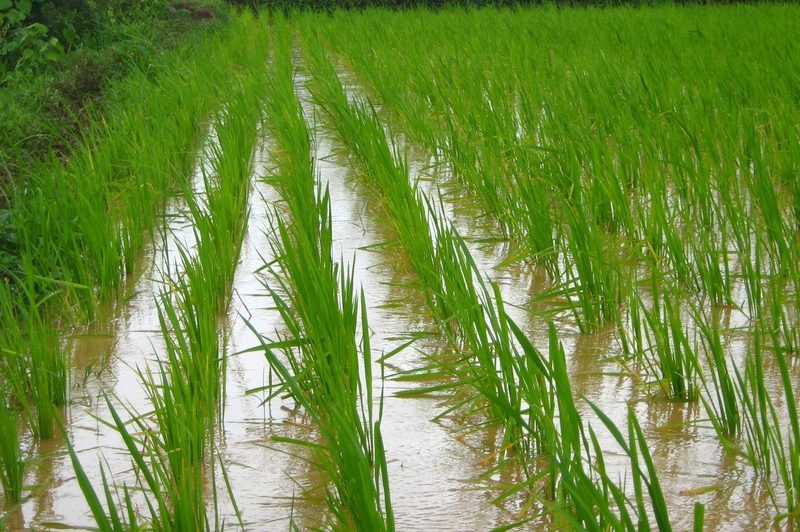When learning how to grow rice hydroponically, you can simplify the process into four steps. You might get overwhelmed with the various pieces of information for this method, but this article will make it easy to understand for you. You can also consider combining the hydroponic system with the greenhouse to take control of the conditions easier and take advantage of this structure’s various benefits.
In addition to equipping yourself with knowledge on rice production by checking university extensions programs, you must understand the differences when growing hydroponic rice. This article will discuss the hydroponic system best for rice and other considerations to avoid drawbacks in production. Remember that growing rice hydroponically is still a growing practice, and experience is required for success in this endeavor.

Comprehensive Guide On How To Grow Rice Hydroponically
Step #1. Seed preparation
The first step in growing rice hydroponically is preparing the seeds for germination. You can use any rice seeds or long-grain brown rice for hydroponics. To prepare them for germination, you must soak them for at least 36 hours and then dry for a whole day before the next step.
Step #2. Rice germination
Once the soaked rice seeds have dried for 24 hours, you can use a bucket for germinating the seeds. An accessible medium would be a mix of soil and compost and then fill it with water. Plant the seeds in the bucket, and they should germinate within two weeks.
A useful tip to support germination is placing the container in the greenhouse. Indoors, you can adjust the temperature to a higher level, which is optimal for rice seeds. You can also check out production manuals from universities to understand rice growing better.
Step #3. Maintenance
To simplify the technique of growing rice hydroponically, you can use a hydroponic pot for the seedlings. Ensure that you eradicate the soil from the roots to avoid problems and for easier nutrient uptake. The roots should be in contact with the system’s nutrient solution to guarantee growth.
If you have the hydroponic system in the greenhouse, adjust the temperature to around 77°F to encourage the rice’s quick development. You can leave them on their own for six months before harvesting. At this point, you should familiarize yourself with the solutions that would be supportive of rice production.
Step #4. Harvest
You can harvest the rice stalks as you would in a traditional setting. However, don’t forget to allow them to dry for two weeks by wrapping them in a newspaper. You can roast these dried stalks for an hour to make the hull removal easier for consumption preparation.
What Hydroponic System To Use For Rice?
The methodology previously discussed is a simplified explanation of how to grow rice hydroponically. This should help you understand the concept of growing rice this way, but be free to adjust the techniques to what is suitable for your production system. The main takeaway here for you is to remember to have the rice roots submerged in water.
The ideal system
Therefore, you can assume that the best system for those wanting to learn how to grow rice hydroponically is deep water culture. However, one might also be limited with their budget in choosing a hydroponic set-up. The challenges you will face in hydroponic rice would also include testing what methods you should do to grow after 180 days.
For example, you have to be well-equipped with the hydroponic technique you chose. Some might be too technical and complicated, especially for rice. Always do your research before selecting a system permanently.
The three factors to remember
The other factors to remember in choosing the hydroponic system for rice are what substrate you’ll use for growing, the nutrient solution, and how easy it would be to monitor the nutrient and air supply. Remember that growing any crop in a hydroponic system requires maintenance of the nutrient and air.
Considerations In Growing Rice Hydroponically
After finding the appropriate system and technique, there are also other considerations that you must remember when learning how to grow rice hydroponically. This will let you anticipate drawbacks and create solutions early on. For example, growing hydroponic rice would produce a lower yield, meaning you will need to adjust your system to meet supply needs.
More so, the growing cycle of rice takes around 180 days, which means growing rice hydroponically will only allow two production cycles in a year. You also need to take into account the practices that you must do after harvesting. However, this doesn’t mean that hydroponic rice production is a fruitless endeavor.
Perhaps this system would work well for those with experience in rice production and hydroponic systems themselves. Over time, you’ll develop techniques from experience to have a successful production system. You can maximize the use of water and nutrients for your crops using hydroponics and reap the benefits of soilless production.
Conclusion
Did you know that you can also produce rice in the absence of soil? Learning how to grow rice hydroponically may seem daunting, but one can simplify the methodology into four steps. The simplified version is germinating the rice seeds and growing them in your chosen system.
However, be mindful of the techniques you’ll be comfortable with since rice is not the easiest crop to grow hydroponically. With a proper understanding of the system, monitoring, substrate, nutrient solution, and limitations, hydroponic rice can be fruitful.

Yes, we are very interested to produce rice in Canada.